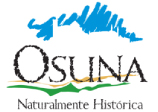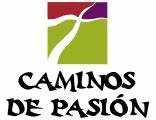


| TRAIL TYPE | NAME | TIME | DISTANCE |
|---|---|---|---|
| SL-A 158 | OSUNA LAGOONS | 2h y 24min | 8,4 km |
The trail begins on the road from Rubio to Lantejuela, near the Santa Gema farmstead, and winds its way through the farmstead's young olive groves. This section of the trail coincides with the Cañada Real de El Rubio, a demarcated livestock trail that leads to the Ballestera lagoon, a declared nature reserve, crossing the young olive groves of Santa Gema and the calm lands of Consuegra.
Upon reaching the Ballestera lagoon, we find a wonderful lagoon basin surrounded by vegetation, in which tamarisk trees and scattered poplars have recently been planted along the path. There are also benches where travellers can rest and contemplate the wonderful steppe landscape and the varied fauna of the lagoon.
If we choose to visit the Pedro López lagoon, we will take the path to the farmhouse of Los Matorrales, where it is common to encounter numerous great bustards in the surrounding fields.
Shortly before reaching the Matorrales farmhouse, we will turn left and begin to climb a hill, at the top of which we can see some cypress trees and the remains of the old farmhouse belonging to Pedro López, where you can still feel the essence of the ancient Roman patrician villa that once stood here. From the top of this hill, looking south, we will enjoy the wonderful view of the Pedro López lagoon, one of the most secluded in our complex. In the background, to the southwest, we can see the holm oaks that form the Casilla del Obispo pasture, one of the few Mediterranean pasture forests that still remain in the countryside after its agricultural transformation.
We will take a walk along a trail from which we can appreciate a rich steppe landscape where, with luck, we will spot great bustards as well as observe the flora and fauna of the Ballestera and Pedro López lagoons, and one of the last remaining Mediterranean pasturelands in the Seville countryside.
In addition to the lagoons mentioned above, we can also see the Calderón Chica Lagoon, declared a nature reserve, where we can spot different endangered birds, such as the white-headed duck, the Olla de la Turquilla, the only freshwater lagoon in the system, the Calderón Grande Lagoon, one of the largest lagoons in Andalusia, the La Huerta Lagoon, Verdesal, Terrosillo and the Hojuelos Lagoon.
Great bustard (Otis Tarda)
The great bustard is unevenly distributed across the steppes, vast plains and extensive cereal fields of Europe and Asia. Spain is home to 50% of the world's population, mainly spread across Andalusia, Extremadura and the two Castiles.
It is an easily recognisable bird due to its large size. In addition, males have light grey heads and necks, with long whitish whiskers on either side of their chins. Their upper parts are ochre with black waves, while their lower parts are white with an ochre band on their chests. Females, which are significantly smaller, do not have whiskers or a chest band. In flight, they display large white patches on their wings.
The male great bustard is one of the heaviest flying birds, weighing up to twenty kilograms, measuring one metre in length and with a wingspan of nearly 2.5 metres. Its diet is mainly vegetarian, although it also includes various animal prey.
They use small depressions in the ground for nesting. The clutch usually consists of two or three bright green eggs with dark speckles, which are incubated exclusively by the female for about four weeks. The chicks are altricial and will follow the female until they can fly after four or five weeks.
Great bustards are very skittish, and it is impossible to get closer than five hundred metres to them.

















